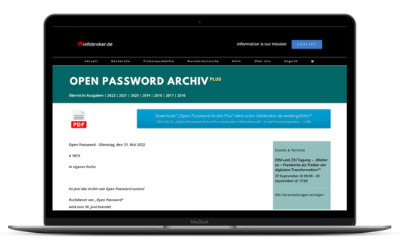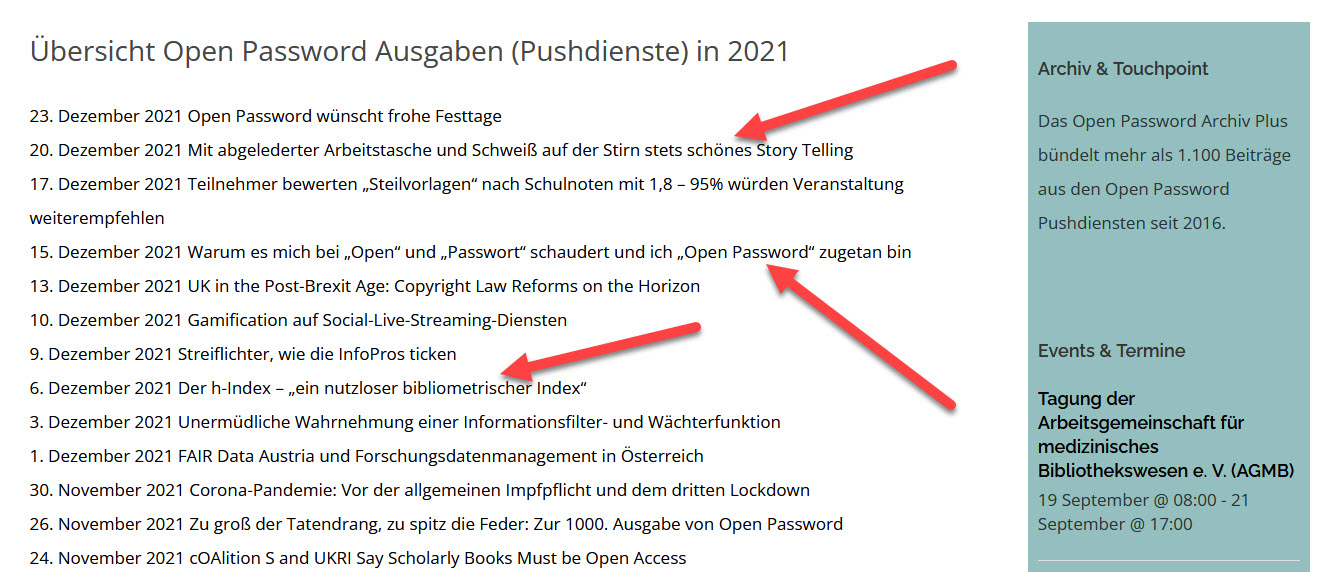Open Password – Freitag, den 7. Dezember 2018
#482
China – Kreditvergabe – Zhohu – Alibaba – BIIA – Experian – Future of Credit Information – Key Drivers – Responsible Lending – Regulatory and Ethical Boundaries – Policy – Credit Information Industry – Wolrd Bank – CRAs – Data Analytics – Machine-based Learning – Personalisation – Lending Decisions – Security – Trust – Minesoft – PatDocs – IP Professionals
China
Kreditvergabe nach Einschätzung
des sozialen Verhaltens
Popular knowledge-sharing platform Zhihu has introduced a user credit system in a bid to incentivize good behavior. Zhihu’s system is made up of ratings in five categories, each evaluating a separate aspect of Zhihu user behavior, based on the application of different algorithms to the full set of Zhihu user data. Popular knowledge-sharing platform Zhihu has introduced a user credit system in a bid to incentivize good behavior:
- Basic Credit: This dimension relates to the basic profile of the Zhihu user, essentially their resume.
- Content Creation: A Zhihu user’s score in this dimension is determined by the quantity and quality of the content they create on the platform.
- Friendly Interaction: This dimension refers to the level of civility with which a Zhihu user interacts with other members of the community.
- Community Behavior: While the “friendly interaction” dimension applies more to informal courtesy, “community behavior” refers more to compliance with official terms of service.
- Community-Building: This dimension refers to the degree to which a user contributes to the monitoring and curation of the content on the platform. Users can increase their score in this dimension by productively up – voting and down- voting answers to questions, editing content, and reporting on other Zhihu users in a way that is accurate.
Similar to Alibaba’s Sesame Credit system, Zhihu Credit is part of a “credit craze” sweeping through China’s internet and technology companies, as they get on board with the government’s plan to introduce a broad “social credit system” by 2020.
Quelle: BIIA
Experian
Die Zukunft der Kreditinformation
Reduce Financial Exclusion
und Fraud Risk, Increase Security und Foster Cross-Border Lending
Experian hat ein White Paper zur „The Future of Credit Information“ herausgegeben. Download unter http://www.experian.ae/assets/WP_Credit-Info-FINAL.pdf. Im folgenden werden die Teile „Topics“, „Vision“, „New Ways to interpret relevant data“ und „Regulatory and ethical boundaries“ wiedergegeben.
Topics: The Key Drivers of Change
Key drivers for change in the credit ecosystem
Explosion of data
New technologies
Changing consumer behavior
New legal framework opening up more data
Impact of new credit information on responsible lending
What does this mean for consumers?
What does this mean for lenders?
What does this mean for the economy?
The future of the credit information ecosystem
Types of relevant data
New ways to interpret relevant data
Regulatory and ethical boundaries
9 Policy recommendations
Vision: Putting the consumer at heart
of what we do and why we do it
„At Experian, we recognize that as an industry, significant progress on understanding and using credit information has been made. However, opportunities exist for us to do much more and we feel significant progress can be made with an industry-wide focus on consumer lending and putting the consumer at heart of what we do and why we do it.
We have put together our vision for the future of credit inform ation as one of the building blocks for appropriate assessments with the aim not only to help prevent over-indebtedness, but to also help reduce financial exclusion, improve security and reduce fraud risk, as well as foster improved access to cross-border credit in the EU.
It is an area where we have a vast breadth and depth of expertise in, as we are already helping millions of people across the globe get access to affordable credit. As recognized by the world bank, credit reference agencies (CRAs), a spart of the financial reporting system, play a vital role in contributing to expanding responsible access to credit and financial stability. „Creditors consider information held by these systems as a primary factor“ when they assess the applicants´ cretiworthiness.“
New Ways to interpret relevant data:
A Personal Appraoch to the Customer´s
ever changing personal
and economic circumstances
„Huge advances in information technology, data mining and data analytics are allowing significant developments in the delivery of increasingly accurate insight and opportunities to surpass more traditional scoring techniques.
Around affordability, for instance, engines can now find deeper trends in consumer data, which continually help improve the accuracy of calculations by delivering help improve the accuracy of calculations by delivering a complete 360-degree picture of the consumer. Machine-based learning systems can also now achieve accuracy levels of more than 90% in identifying income and expenditure patterns, wenn analysing unseen transaction data for the first time. They can categorize 12 month bank transactional data in real-time before feeding it into automated decision software and appending other data sources to help better inform appropriate credit decisions while reducing the time-to-offer.
Ideally these techniques should apply to new ledning opportunities but also to existing lending contracts helping achieve greater customer experience and a more personalised approach by adapting to meet the needs of customer´s ever-changing personal and exonomic circumstances. Lenders will be able to anticipate and proactively offer different financial solutions to best suit their customers at any given time. The new banking industrry could accompany their customers throughout their entire financial life by proposing products and services that are needed at every single step of the way.“
Regulatory and Ethical Boundaries:
Trust as a Prerequisite
„With new dataset and new technology comes the need to ensure an appropriate regulatory and ethical famework to protect the individuals privacy, security and integrity. Every lending decision must be accurate, fair, transparent and follow best practices, especially around security.
Data which is not insightful or accurate should be disregarded as ist could be detrimented and reduce trust. The use of these data also runs the risk of overfitting the model to the false perspective, impacting on all customers and not just the customer initiating the false data.
Processing using AI and machine learning should be free from unlawful discrimination and have been transparency on all factors influencing its algorithm, to enable consumers to reach an informed understanding of how outputs are achieved. Models should be audited, scrutinized and checked for compliance.
Futhermore, security should be at the heart of everything to avoid fraus risks, breaches or data corruption. Customers expect „trust“ as a prerequisite with lenders being the custodians of their data, It is key that organizations put in place contingency plans to support the customer in case of a breach, to be prepared about how to respond, inform and adjust their prevention mechanism to avoid this type of incursions happening again.“
Provider´s Corner
Minesoft
PatDocs for IP Professionals
Minesoft has a brand-new solution for all IP legal professionals, PatDocs, released. The new web-based software makes it easy for IP professionals to streamline their busy workload with an all-in-one system; incorporating auto-complete IDS forms, family tree mapping, one-click document ordering, offline legal status report and more…
PatDocs combines functionalities that help to complete daily tasks for IP professionals in a timely and cost-effective manner. What we aim to accomplish with PatDocs is to adapt the use of high-quality patent data – once only available in our web-based solutions for high-stakes professional searching, legal status monitoring and competitive intelligence tools – into a mechanism for IP legal operations.
With exciting automated functionalities, which are already receiving great feedback across the US and Europe, including family tree mapping – a completely unique way to view a family tree with any level of family complexity, even when dealing with US continuity. Not forgetting the auto-populated IDS forms with unlimited patent references! IP paralegals can edit on the fly and export the SB08 and corresponding PDFs of all foreign art as an Excel file, making it super easy to input into your docketing tool; saving countless hours from an otherwise slow, manual process.
In addition, as with all other Minesoft solutions we have made it simple and cost-free to share information (also with non-users). PatDocs offers a variety of offline links and export/download tools, simplifying the process of disseminating information through a corporation, law firm or with clients and outside counsel. Comprehensive worldwide legal reports, combining data from key global patent offices have offline links to the full text, file history, legal status viewer, family tree, and more…
Users can take advantage of integrated access to one of the fastest and most widely-used patent document delivery engines in the industry! PatentOrder retrieves documents from around the world with almost instant delivery to your inbox.
PatDocs is available now, contact Minesoft today for a free demonstration and two-week trial. Call us on +44 (0)20 8404 0651 or email us at info@minesoft.com.
Anzeige

FAQ + Hilfe



